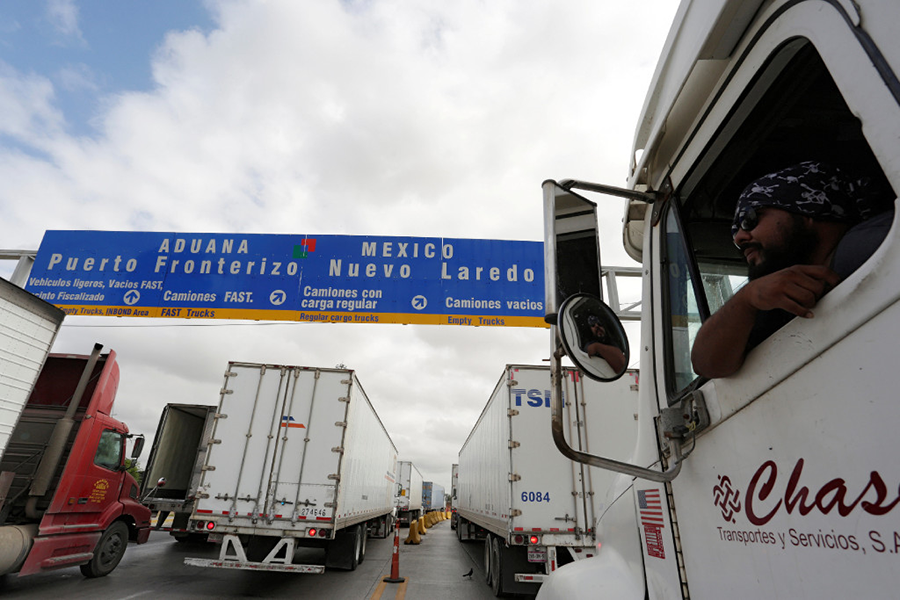GOP's vs. Trump's border taxes explained
Loading...
For weeks, congressional Republicans, Donald Trump, and various factions of Corporate America have been engaged in an intense battle over how to tax imports into the US. In Washington-speak, this debate has been turned into a battle between border adjusted taxes and a border tax. To any normal human, these sound like the same thing. But trust me, they are not.
The House Republican leadership wants to tax all imported goods and services. Their plan would exempt all US exports from US tax, but prohibit US firms from deducting the cost of products they import from other countries, an idea called border adjustability.
By contrast, President Trump and his allies seem to prefer imposing targeted taxes, or tariffs, on only imports of his choice. These could apply to a single product, a specific company, or all goods and services from a country. He calls this his “big border tax.”
For example, at various times, Trump has threatened to impose such a levy on one model of the Chevrolet Cruze, which GM planned to produce in Mexico, and on all products imported into the US from Mexico or China. President Obama imposed tariffs on steel and tires imported from China in response to that country’s effort to sell those products in the US at artificially low, state-subsidized prices.
But aren’t these just two ways to do the same thing? They really aren’t. Their goals and consequences are very different. Here are four reasons why.
Goals: Supporters argue that border adjustability would be more efficient than current law, reduce opportunities for companies to game the tax system, and make the tax treatment of imports and exports more equitable. Backers are explicit: Such a destination-based tax is not trade policy. It is aimed at treating imports and exports equally, not giving US exports a tax advantage.
By contrast, Trump’s border tax is explicitly trade policy. It appears that he wants to boost domestic manufacturing by punishing US firms that move production overseas and by generally curbing imports from certain countries.
Economic effects. Many public finance economists argue that the border adjustment would have no effect on prices, even though it seems at first glance to increase the after-tax cost of imported goods. The reason: Exchange rates would adjust to respond to this new tax regime. Supporters believe it would not alter the balance of trade, nor do they claim it would significantly boost the economy. But overall economic effects are uncertain.
Nearly all economists agree that tariffs are the economic equivalent of shooting yourself in the foot. They raise prices for consumers, while merely shifting production from targeted countries to other foreign locations. For example, Gary Hufbauer and Sean Lowry of the Peterson Institute for International Economics found that when the US taxed those Chinese tires in 2009, imports from China fell, but US sales of tires from Thailand, Indonesia, and Mexico picked up the slack. They estimated that the tax created about 1,200 US jobs in 2011 but at a cost to US consumers of $800 million. More troublesome is the risk that aggressive use of tariffs could set off a trade war that could endanger economies around the world.
Transparency and public relations. This issue of tax salience, or transparency, is not to be underestimated in a Trump Administration. A border-adjustable tax would be enacted just once, as part of a much bigger tax bill. The higher import taxes would be largely invisible to consumers (and voters). Even if the economists are wrong about currency changes offsetting price increases, any tax hikes would be largely built into prices and be invisible to consumers.
By contrast, Trump could order tariffs on products or companies at high-profile events throughout his presidency, or withdraw them in an equally attention-getting way. These taxes would be highly visible and help promote his “America first” agenda.
Revenues. The Tax Policy Center has estimated the House GOP’s border adjustments would increase federal revenues by $1.2 trillion over the next 10 years. That’s money that backers need to offset some of the cost of reducing corporate tax rates.
It is impossible to know how much revenue Trump’s tariffs would generate but past experience suggests it would be very little. Because the taxes often are imposed on a single product, potential revenue is very small. Moreover, importers usually respond by reducing sales to the US rather than paying the tax.
These two ideas may sound the same, but they could not be more different.
This story originally appeared on TaxVox.







